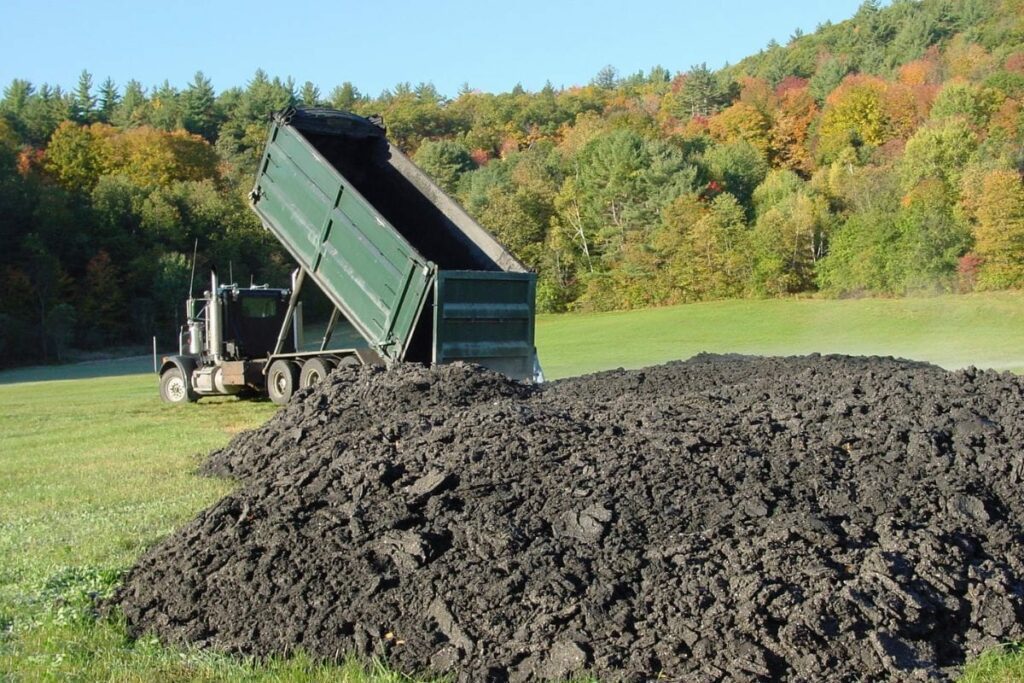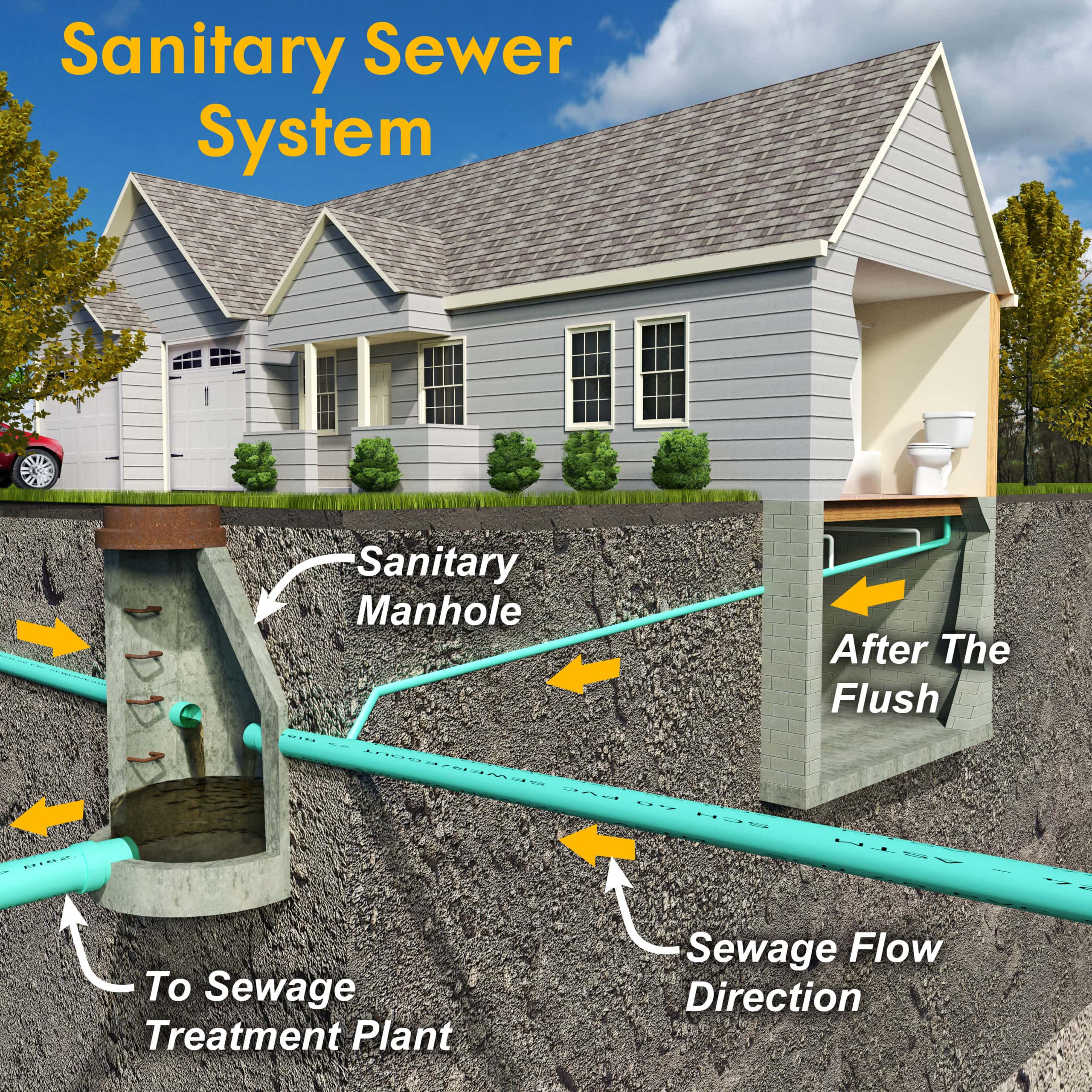Did you know that, on average, an adult produces nearly 320 pounds of poo yearly? That’s almost equal to the weight of an adult panda! Have you ever wondered what happens to all the poo once you flush it down the toilet?
Once flushed down the toilet, the poo is taken to a sewage treatment plant using a network of sewage pipes. Once the raw sewage is processed through a series of steps, a portion of the waste ends up fertilizing the crops, some is used as a fuel, and the rest is dumped out in landfills.
Raw sewage contains many harmful microbes that can cause various diseases in humans and other animals. Hence, it is crucial to process it properly before disposing it in landfills. Let’s take a closer look at how the sewage containing your poo is processed, recycled into usable materials, and handled by most cities in the country.

What Happens to the Poo Once you Flush It Down the Toilet?
Once you flush your toilet, your poo enters a network of pipes called the sewage system. Almost every city in the world has this system to carry tons of sewage daily. The sewage pipes also bring water and other waste from your drains, showers, and even streets.
The poop is then taken to a sewage treatment facility on the outskirts of the city known as the wastewater treatment plant. Here, the magic happens that turns the dirty, contaminated water into something useful.
What Happens to Your Poo in a Wastewater Treatment Plant?
A wastewater treatment plant is a facility designed to treat raw sewage to render it safe for disposal. In most of the United States, the wastewater treatment happens in three stages:
- Stage 1
In the first stage of the sewage treatment, all the poo, waste, and water collected from the city sits in open tanks for hours. It is an important stage as it allows the denser solids to settle at the bottom of the tanks. While the supernatant water is sent off to filtration plants to be further processed, the solid waste containing the poo remains in the tank. Once the water is skimmed off, the sediment left behind in the tank is now called Sludge.
- Stage 2
The second stage of the waste treatment is called the activated sludge process. At this stage, beneficial bacteria are introduced into the sludge that consumes oxygen and other pollutants such as nitrogen, sulfur, and phosphorous that would have otherwise caused massive pollution. At this stage, the microbes are ‘digesting’ the poo and converting it into simpler organic substances.
In the next step, the sludge is transferred into a giant tank called the digester that is heated to around 95F (35C), and the oxygen supply is cut off. The conditions are perfect for anaerobic bacteria to thrive. The anaerobes further decompose the waste into water, carbon dioxide, and methane. In some treatment plants, the methane produced is also utilized as fuel.
Treating the sewage this way has two distinct advantages-
- The combination of aerobic and anaerobic bacteria can quickly and efficiently breakdown the waste into simpler, harmless substances, and
- The anaerobic conditions and high temperature kill any pathogenic microbes in the sewage
Once the sludge is treated in this step, it is termed ‘activated sludge.’
- Stage 3
When your poo reaches the third stage, it is mostly liquid that needs to be dried out as much as possible. Most sewage treatment plants use machines called centrifuges to dry out the sludge. The dried leftovers are now termed ‘biosolids’ and are very useful in several fields.
You will be surprised to know that out of the 320 pounds of poo you produce each year, about 47 pounds are converted into usable biosolids.

What happens to the biosolids?
According to the National Academies’ National Research Council, around 55% of the biosolids are used in the agriculture sector as organic fertilizers, about 17% of the biosolids are burned off for energy, and the rest find their way into landfills.
What Happens to All the Water That Gets Flushed with the Poo?
The water that comes along the poo and other waste in a treatment facility can’t be thrown into water bodies such as rivers or lakes without proper treatment. The wastewater contains many harmful bacteria and chemicals, so it must be filtered and treated with chlorine to kill any microbial contaminants.
The treated water from the wastewater treatment plants is often called ‘reclaimed’ water and is used for different purposes, including irrigation of fields and industries. Some treatment systems use a special biologic process to remove dissolved organic matter from reclaimed water before dumping it into natural water bodies.
Some countries like Australia and Singapore make recycled drinking water out of treated sewage. These countries have stringent wastewater management rules and regulations and have achieved tremendous success in 100% recycling sewage.
Why Should You be Careful About What You Flush Down the Toilet?
According to the experts, the only things you should be flushing down your toilet are pee, poo, and toilet paper. Several items such as baby wipes, paper towels, feminine sanitary products, and other solids can easily block the sewer pipes creating a huge problem in wastewater management for the city.

It is also important to understand that what you flush will find its way back into your environment. For instance, the dissolved chemicals in cleaners and other household items can harm the delicate ecosystems of rivers and lakes.
Think Before You Flush
You can help your environment if you take a pause and think before you flush things down the toilet. Not only do you risk clogging your toilet, but you also pollute your environment. Here are a few things that you should avoid flushing down the toilet-
- Baby wipes
- Q-Tips, cotton balls, and other cotton products
- Feminine hygiene products
- Condoms
- Diapers
- Cat litter
- Medicines, especially antibiotics
Frequently Asked Questions
Why can I flush toilet paper but not a paper napkin?
Toilet paper is made using a special process that dissolves into a thin sludge when it encounters water. In contrast to a paper napkin, the fibers of the toilet paper become untangled more easily in water. Hence, toilet paper does not clog sewer pipes, but paper napkins do.

Is it okay to flush bleach down the toilet while cleaning?
While cleaning your toilet with bleach is okay, you should avoid pouring excess amounts of undiluted bleach down your toilet or any other sink in your household. If you must use bleach, always dilute it with water before pouring it out in the sink or flushing it down the toilet.
To Wrap it Up
Once you flush it down your toilet, your poo embarks on an arduous journey involving several steps. Thankfully, we live in a world where we have found a way to handle our waste safely and recycle it into something useful!

Amos Christen graduated with a bachelor’s degree in Interior Design from Drexel University — Philadelphia, PA. Since 2003, Amos has worked with top interior design professionals in this area, including architects and interior/graphic/lighting designers. As a skilled interior designer, Amos Christen is highly versed in fine arts and crafts and uses that to supplement his main area of expertise. He often publishes articles related to home décor on several websites, including Sprucetoilets.com, Sprucebathroom.com, and Mybesuitedhome.com. He also contributes to leading interior design magazines.
